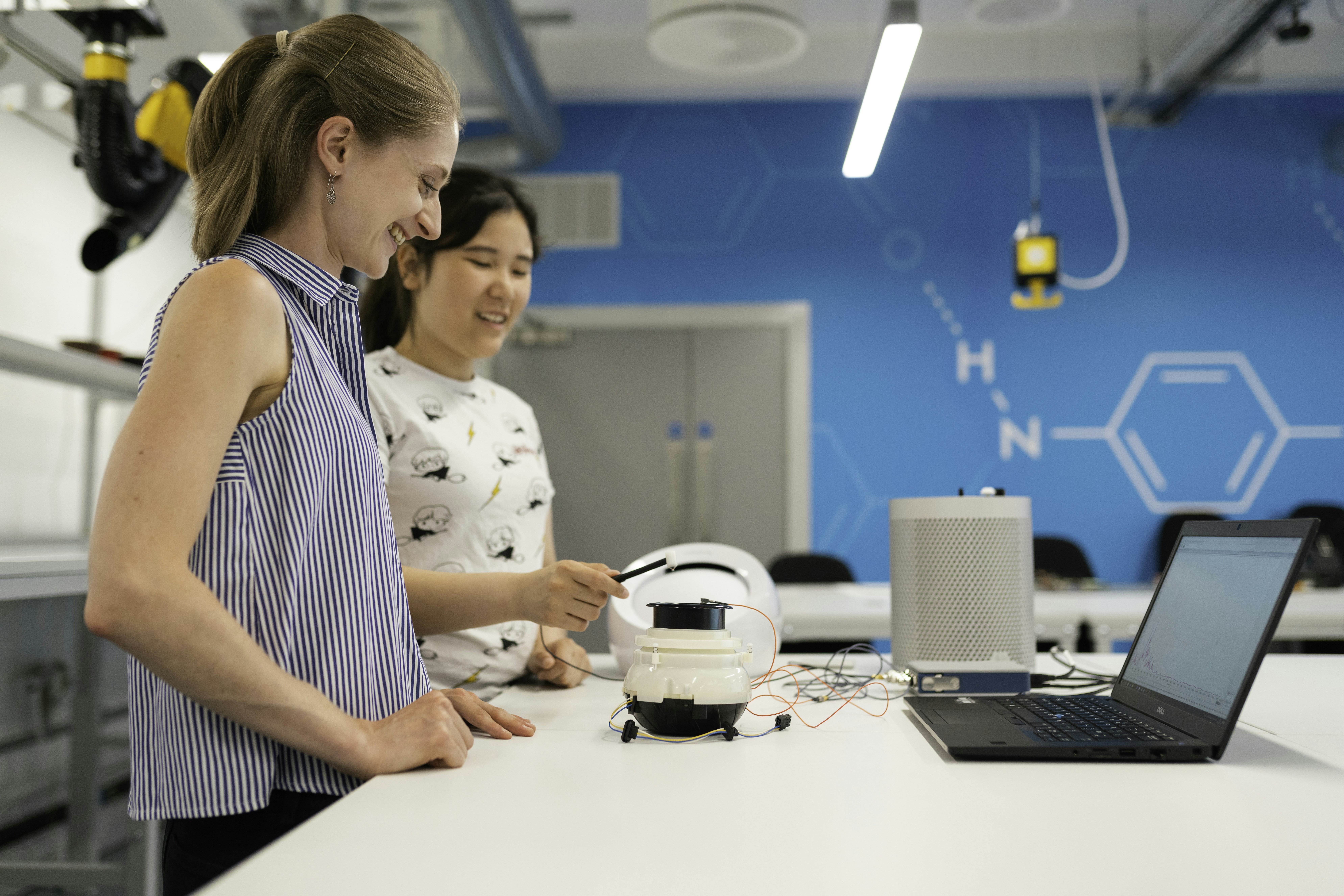Building Life Layer by Layer
The Art of Crafting Polymer Scaffolds with Laser Precision
Introduction: The Scaffold Revolution
Imagine a world where damaged bones regenerate perfectly, where organ donors become unnecessary, and where personalized tissue implants are printed on demand. This isn't science fiction—it's the promise of tissue engineering (TE) scaffolds fabricated via surface selective laser sintering (SLS).
Every year, over 2 million bone graft surgeries are performed globally, battling limitations like donor scarcity and immune rejection 8 . Enter SLS: a 3D printing technology that sculpts intricate polymer scaffolds layer by layer, creating bespoke structures that mimic natural tissues. By harnessing the precision of lasers and the versatility of biomaterials, scientists are pioneering scaffolds that don't just repair bodies—they orchestrate regeneration.
Key Concepts: The Science of "Biological Blueprints"
Tissue engineering scaffolds are 3D porous architectures that replicate the extracellular matrix (ECM)—the natural scaffold in human tissues. For bone regeneration, scaffolds must:
- Promote cell attachment (osteoconductivity)
- Degrade safely as new tissue forms
- Mimic mechanical strength of native bone (e.g., ~50–150 MPa compressive strength) 8
- Feature interconnected pores (100–500 μm) for cell migration and nutrient flow 2 8 .
Traditional methods like solvent casting struggle with pore control, but SLS enables digital precision in architecture design.
Selective laser sintering builds scaffolds through a high-tech dance:
- Powder Deposition: A thin layer of polymer powder (e.g., polyamide or bioactive composite) spreads across a build platform.
- Laser Sintering: A CO₂ or fiber laser selectively fuses powder particles, tracing the scaffold's cross-section.
- Layer Stacking: The platform lowers, new powder is added, and the process repeats 3 9 .
Why SLS excels:
Pure polymers like polyamide 11 (PA11) offer biodegradability but lack bioactivity. Breakthroughs combine them with:
- Bioactive glasses (BGs): Silicate-based particles (e.g., 45S5 Bioglass®) that bond to bone via hydroxyapatite formation 2 .
- Core-shell powders: SiC ceramics grafted with polycarbosilane to enhance sintering and density 6 .
- Drug carriers: Scaffolds loaded with growth factors (e.g., BMP-2) to accelerate healing 4 .
Fun Fact: Bioactive glasses undergo 12-stage reactions in the body, culminating in crystallization of bone-like mineral layers 2 .
The Key Experiment: Bioactive Glass Scaffolds for Bone Regeneration


2.1 Methodology: How to "Print" a Bone Scaffold
A landmark study (inspired by 2 ) fabricated polymer/BG composite scaffolds:
Step-by-Step Fabrication Process
Step 1: Material Preparation
- Powder blend: Mixed PA11 polymer with 20 wt% 45S5 bioactive glass particles (<50 μm).
- Preheating: Heated powder bed to 170°C (just below PA11's melting point).
Step 2: SLS Printing
- Laser settings: CO₂ laser at 25 W power, 2.5 m/s scan speed, 0.1 mm hatch spacing.
- Layer thickness: 100 μm.
- Design: Cylindrical scaffolds (10 mm diameter) with grid-like pores.
Step 3: Post-Processing
- Cooling: Gradual cooling over 12 hours to prevent warping.
- Depowdering: Removed unsintered powder using compressed air 2 7 .
Step 4: Characterization
- Mechanical testing: Compressive strength measured.
- Bioactivity assay: Soaked in simulated body fluid (SBF) for 14 days to detect hydroxyapatite.
- Cell culture: Seeded with human osteoblasts to assess cell viability.
2.2 Results & Analysis: Why This Matters
| Property | Pure PA11 | PA11 + 20% BG | Change |
|---|---|---|---|
| Compressive Strength | 32 MPa | 48 MPa | +50% |
| Porosity | 55% | 63% | +8% |
| Hydroxyapatite Formation | None | Observed at Day 7 | N/A |
| Cell Viability (Day 7) | 78% | 95% | +17% |
Key findings:
- Enhanced strength: BG particles reinforced the polymer matrix.
- Accelerated bioactivity: Hydroxyapatite formed within 7 days in SBF, confirming bone-binding ability.
- Cell proliferation: Osteoblasts thrived on BG-loaded scaffolds due to surface chemistry 2 8 .
The Big Picture: This proves SLS can create mechanically robust, bioactive scaffolds in one step—bypassing traditional multi-stage fabrication.
The Scientist's Toolkit: Essential Reagents for SLS Scaffolds
| Reagent/Material | Function | Example Brands/Compositions |
|---|---|---|
| Polyamide 11 (PA11) | Biodegradable polymer base | Rilsan Invent Natural (Arkema) |
| Bioactive Glass (BG) | Enables bone bonding & mineralization | 45S5 Bioglass® (NovaBone) |
| Polycarbosilane | Ceramic precursor for core-shell powders | Starfire® CVD-4000 |
| Simulated Body Fluid (SBF) | Tests bioactivity in vitro | Kokubo recipe (pH 7.4) |
| Thermal Stabilizers | Prevents polymer degradation during sintering | Titanium dioxide nanoparticles |
Optimizing the Future: Challenges & Innovations
4.1 Current Hurdles
4.2 Trailblazing Solutions
- Multi-laser systems: Dual CO₂ lasers (as in new SLS 380 printers) cut sintering time by 40%, improving resolution 3 .
- AI-driven parameter control: Machine learning algorithms optimize laser power and scan speed in real-time to reduce defects 9 .
- Hybrid scaffolds: Integrating sacrificial materials (e.g., sugar) to print vascular channels within scaffolds 8 .
| SLS Parameter | Low Value | High Value | Optimal for Scaffolds |
|---|---|---|---|
| Laser Power (W) | 10 | 40 | 20–30 |
| Scan Speed (m/s) | 1.0 | 5.0 | 2.0–3.0 |
| Layer Thickness (μm) | 50 | 150 | 80–100 |
| Bed Temp (°C) | 160 | 190 | 170–180 |
Conclusion: The Path to Printing Organs
Surface selective laser sintering has transformed tissue engineering from art to precision science. By fusing polymers with bioactive cues, SLS crafts scaffolds that are more than implants—they're temporary architects of regeneration. As AI optimizes sintering and materials evolve toward vascular-ready designs, the dream of printing complex organs seems increasingly tangible. In labs worldwide, lasers are already whispering the future: one layer, one cell, one life at a time.
"SLS scaffolds don't just fill gaps—they teach the body how to rebuild itself." — Dr. Yang Liu, Jiangsu University 1 .
Article Navigation
Key Figures

Fig 1. Laser sintering process creating porous structures

Fig 2. Cells attaching to scaffold surface